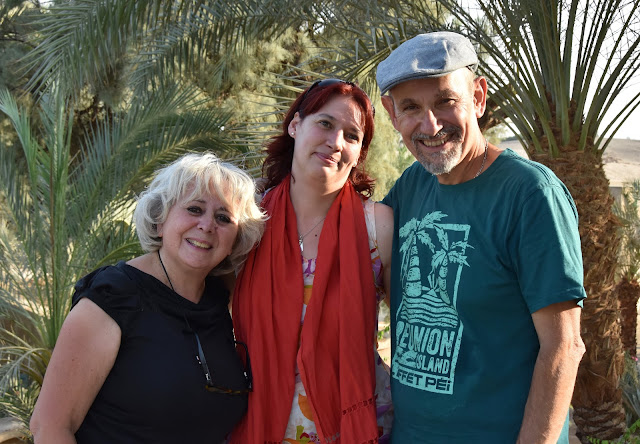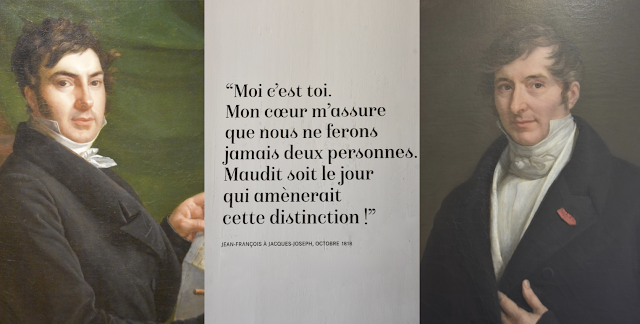
By Léon Cogniet – Musée du Louvre

By Victorine-Angélique-Amélie Rumilly –
Jean-François Champollion, a genius who discovered the code of the ancient Egyptian language, also known as Champollion le jeune, was a French philologist and orientalist known primarily as the decipherer of Egyptian hieroglyphs and a founding figure in the field of Egyptology. He is one of the most valuable personalities who helped humanity- along with great support from his brother Jacques-Joseph Champollion- to take a big step towards understanding the human past.
Just imagine these words (holography) written on this vast stone were not decipherable. But now we are not illiterate anymore!
Here, we read an exciting introduction by Marie Grillot about a brilliant Egyptologist and her research on this genius of decoding ancient language.
PS: I wish there could also be a translated clip!
Jean-François Champollion in Egypt: an interview with Karine Madrigal
via; égyptophile

Figeac, December 23, 1790 – Paris, March 4, 1832
Portrait representing him in Egyptian clothing, made by Salvatore Cherubini in Medinet Habou,
in July 1829 – acquired by the Musée Champollion de Vif in June 2022

directed and filmed in Malqatta by Marie Grillot & Pascal Pelletier
To discuss “Jean-François Champollion in Egypt”, it is in Louqsor that we found the Egyptologist Karine Madrigal…
Since July 2010, she has been studying the 60 volumes of archives of the Champollion brothers deposited in the Departmental Archives of Isère. Through this incredibly rich source, nothing that links the two brothers is foreign to her…
On the one hand, Jacques-Joseph Champollion-Figeac, the eldest, and on the other, Jean-François Champollion, known as “the young one”. Twelve years separate them, Jacques-Joseph will be the godfather of his younger brother and… his pygmalion… He will help and assist him in his education, studies, research, and obsessive quest to understand writing from ancient Egypt.

Paintings by Victorine-Angélique-Amélie de Rumilly were exhibited at the Musée de Vif in Isère.
This hard work led to the presentation, on September 27, 1822, at the Académie des Inscriptions et Belles-Lettres in Paris, of his famous “Letter to Mr. Dacier”, which would be the founding act of the decipherment of hieroglyphs and, by the same, will sign the birth of a new discipline, Egyptology…
Jean-François was then 32 years old… In 1824, he was sent on a mission to the Turin Museum to establish the catalogue of the Drovetti Collection. Then, he returned to Italy in 1826 to appraise the Salt Collection. There, he met Ippolito Rosellini, who became his student and disciple. On May 15, 1826, he was appointed curator of the Egyptian section of the Charles X Museum (future Louvre Museum).
But what he wants more than anything is to go to Egypt to carry out a scientific mission… and this project will finally come to fruition…
The Franco-Tuscan Expedition, sponsored by Charles X and the Grand Duke of Tuscany, left Toulon on July 31, 1828, aboard “L’Eglé” and landed on the Egyptian coast on August 18, 1828. It is managed on the French side by Jean-François Champollion and on the Tuscan side by Ippolito Rosellini…
From July 1828 to December 1829, they explored the various ancient sites, from Alexandria to Abu Simbel and even as far as Wadi Halfa… During these eighteen months, the fourteen members – “scholars and technicians” – will have to learn to live and work together… As for the famous decipherer discovering his “promised land”, he finds himself surprised that his deciphering system works “in situ” and on monuments from all periods…

and standing to his left holding a sketch, Ippolito Rosellini
Painting by Giuseppe Angelli © National Archaeological Museum of Florence – 19th century, between 1834 and 1836
Thanks to Karine Madrigal’s excellent knowledge, combined with her passion and her undeniable talent as a “storyteller”, it is with joy that we relive, with her, this great and rich adventure from the beginnings of Egyptology…
This interview, prepared and produced by Marie Grillot, was filmed by Pascal Pelletier for Guinée-nouvelles and the Association for the Safeguarding of the Ramesseum (ASR). It was filmed at the French Archaeological Mission of Thebes West house in Malqatta, which Christian Leblanc was kind enough to make available… You can view it by clicking on the photo below:
Published 4 weeks ago by Marie Grillot
Libellés: expédition franco-Toscane Ippolito Rosellini Jacques-Joseph Champollion Figeac Karine MadrigalJean-François Champollion Lettre à M. Dacier

Such an interesting post!
The Rosetta stone in the British Museum is really spellbinding
LikeLiked by 2 people
Indeed, my dear friend. It was the discovery of all time. Thank you, as always, for your support, my lovely Luisa.🤗💖🙏🌹😘
LikeLiked by 1 person
Many thanks to you for your kind reply, dear Aladin 🙏🌹🙏
Wishing you a lovely weekend
LikeLiked by 1 person
I thank you, and wish you a great week ahead.🙏🥰💖🌹🌺
LikeLiked by 1 person
🙏💙🙏
LikeLiked by 1 person
🧡🧡🧡
LikeLiked by 1 person
A fascinating post Aladin and a lifetime’s work, I can imagine, to decipher the hieroglyphics.
LikeLiked by 2 people
Such discoveries are fascinating and help us learn more about ourselves. Thank you, dear Lin, for your encouraging comment.🤗🙏
LikeLiked by 2 people
I agree with Luisa – just as she said “The Rosetta stone in the British Museum is really spellbinding”. I had been there several times years ago!
LikeLiked by 1 person
I agree with you both, my dear ladies! I would like to have a visit to this amazing museum.😊🙏🥰
LikeLiked by 1 person
Fascinating.
This is a wonderful piece of knowledge to have gained by your post.
It is more simply factual, than many of your posts which explore things and ideas that are more of an esoteric nature, or partly unknown because certain ancient recorded history is gone, or not understood.
Of course when it comes to Egypt, Jean-François Champollion has made its available ancient recorded history available to the present.
💖📚🔏🖋📝💖
LikeLiked by 1 person
You are absolutely right, my dear friend. The more such geniuses, the more we understand our past.🥰🙏🤗🖖
LikeLiked by 1 person